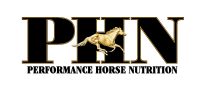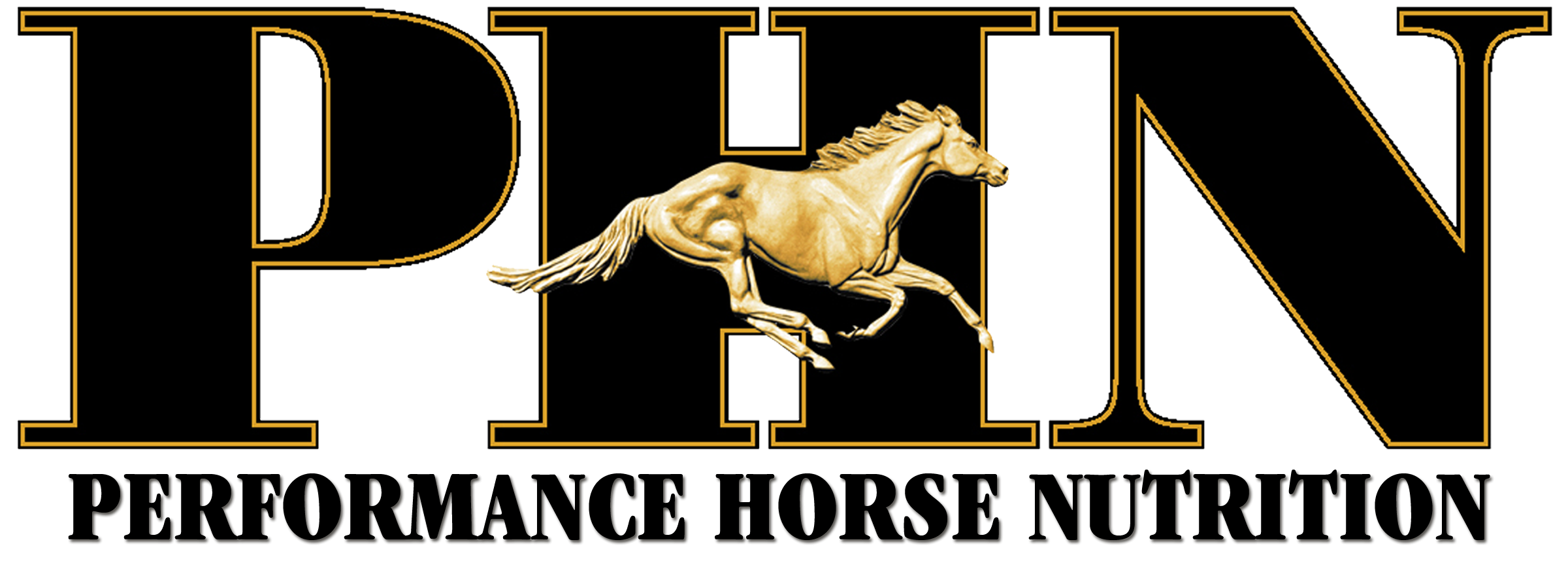FEEDING HORSES FOR
WEIGHT GAIN
April 2015

Written by Performance Horse Nutrition
How to feed horses for weight gain is commonly asked question. Some horses do not maintain their body weight easily and it can prove a real challenge to keep them at an ideal weight. Ultimately your horse’s ribs should not be visible but they should be easily felt if you run your hand along your horse’s side. A common complaint from horse owners is that their horse hasn’t got enough top line. This is achieved through the horse working in a manner that strengthens muscles in the back and the correct diet of quality protein which helps to build muscle. Regularly monitoring your horse’s weight with a weigh tape or livestock scale will allow you to identify any changes to their weight early, thereby enabling you to make corrective actions quickly. But firstly we must understand why the horse is underweight.
What Causes Weight Loss?
Weight loss can be credited to a number of factors, only some of which are feed related. The first factor that should be checked when assessing causes for weight loss is the condition of their teeth. Proper dentition is essential to a horse because of the nature of its diet. Horses evolved eating coarse forage and plant materials that require thorough grinding by the molars to break down the particle size of the food. Poor worming regimes can also cause weight loss regardless of what and how much you are feeding. Parasites may compete directly for the nutrients inside the digestive tract. They may also cause damage to the intestinal lining, making it difficult to absorb nutrients. Damage to the intestinal lining can diminish production of enzymes needed to prepare food particles for absorption. Stress can also contribute to weight loss. If your horse is a chronic stall walker, weaver or fence runner, he is burning calories needlessly, all day long. Simple management changes, such as daily turnout or the addition of a stall buddy, can alleviate these behaviors. High grain, low forage diets can also cause stress as a result of gastric ulcers that are painful to the horses and may discourage them from eating.
Disease or illness can also interfere with weight gain either my decreasing the horses appetite or by directly affecting nutrient absorption within the digestive tract. If all these can be eliminated and your horse is still not putting on weight, the next step is to evaluate your horses’ diet. A common cause of feed related weight loss is owners simply not feeding enough. Whether the horse is solely at pasture with no feed provided or the wrong feed or not enough of the correct feed all of these scenarios can result in weight loss.
What Should I feed?
Of the three major energy sources (fiber, carbohydrates and fat) for the horse, fiber is the most important. Fiber is the major component of pasture and hay. Some horses can maintain their weight on fiber sources alone. For the poor doer, however, fiber alone will not maintain weight, but there are fiber sources with higher energy content and digestibility than others. When comparing the energy content of alfalfa and grass hays, alfalfa hay can provide a horse with more energy than grass hay of similar quality. However, low-quality alfalfa hay which is has more stem than leaf is not a rich source of energy.
When quality pasture or hay is not available, or if the horse does not readily eat hay or have access to pasture, there are alternative fiber sources that can be added to the diet. The most common are “super fibers” such as beet pulp, and legume hulls (soy or lupin hulls). The fiber in Beet pulp is about 80% digestible (as compared to 50% for the average hay). Soy and lupin hulls are the skin of the bean (not the husk or pod) that is knocked off before oil is extracted from the bean. The energy content of legume hulls is close to that of oats. Certain additive such as yeast may help with fiber digestion if the horse has a problem with the balance of microbes in the large intestine. Yeast has been researched and found to improve fiber digestibility.
Carbohydrates, specifically sugar and starch in the form of grains has been the most traditional method of increasing the energy density of the diet. Obtaining energy from sugar and starch is very efficient due to its simple enzymatic process. While grain is a concentrated source of energy for the horse, there are some complications with feeding large quantities. The small intestine can easily become overloaded with sugar and starch resulting in an overflow into the large intestine. This can lead to gas colic, colonic ulcers and even laminitis. When trying to get a thin horse to gain weight, it is often tempting to keep increasing the amount of grain being fed. Unfortunately, if too much grain is fed and the delicate microbial population in the large intestine gets disturbed most horses will lose their appetite and the situation worsens. Care should be taken not to feed any more than 4 lb of grain in a single meal. When large amounts of grain are fed it should be divided equally over 3 or more meals throughout the day. It is also important to make sure grains are processed in order to make the nutrients more available to the horse and ensure proper digestion in the small intestine. Make sure the horse is always getting at least 1.5 to 2% of their body weight in the form of fiber and a good rule of thumb is to try a stick to a forage to grain ratio of around 70:30.
Fats and oils are commonly used in horse feeds to increase the calorie content of the feed or to replace the calories supplied by grains. Fat supplementation has many benefits including, providing calories for weight gain and providing essential fatty acids to improve skin and coat condition. Feeding fat has also been reported to decrease excitability in nervous horses. Both animal fats and vegetable oils have been fed to horses, although the use of vegetable oils such as soy or canola oil is more prevalent due to superior palatability.
Fat sources such as vegetable oil contain 2.5 to 3 times more energy than grains on an equal weight basis. Increasing the fat level of the diet is the easiest and safest way to increase the energy density of the diet. Higher energy levels can be obtained by feeding a lesser amount of a highfat concentrate mix compared to a concentrate mix containing lowerenergy grains. Research has indicated that adding 5 to 10% fat to the total diet has maintained the body weight of horses with a 21 to 25% decrease in concentrate intake. Adding fat to a horse’s diet permits safe weight gain while reducing the chance of colic or founder. Digestion of fat also yields less internal body heat when compared to other diets. Thin horses will gain weight and do so without having to eat as much grain if the diet is fortified with additional fat.
How long will weight gain take?
Gaining weight on your horse will not happen overnight and horse owners should have reasonable expectations as to how long it will take to avoid disappointment. The 2007 National Requirements for Horses suggested that it takes 35 to 45 lb. of gain to change a horses body condition score by 1 unit (based on a 1100 lb. horse; 1 to 9 scale). Therefore a horse with a body condition score of 2 would need to gain around 120 lb. to increase their condition score to a 5. This would take around 6 months to achieve and would require a very energy dense feeding protocol. It is safe to assume a horse can gain one condition score per 60 days when provided with adequate additional dietary energy and no underlying disease is apparent.
Take Home Message
Whether your horse is underweight, overweight or just right, it’s important to evaluate his condition through advancing age, environmental changes and performance demands regularly. Addressing unwanted fluctuations before they become potential health risks is the key to maintaining optimal body weight. After addressing all possible causes for the horses’ weight loss, increasing the amount and quality of fibre the horse is receiving should be the first dietary change made, followed by increasing the energy density of the concentrate portion of the ration. It is essential that owners follow the feeding directions listed on the back of the feed bags to ensure their horse will maintain or gain weight as they desire.
-Dr. Tania Cubitt

